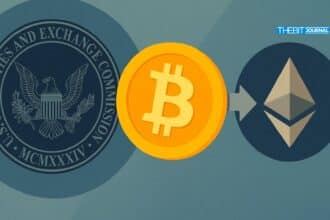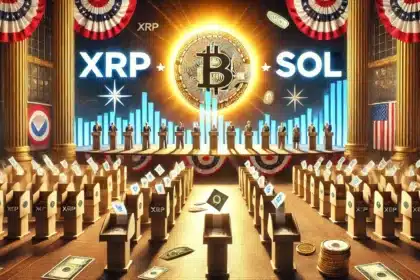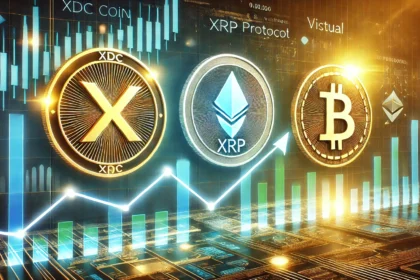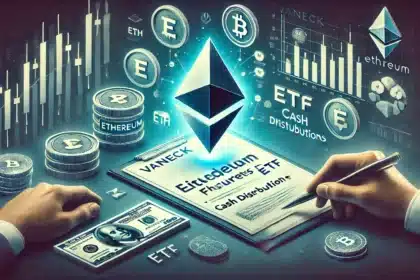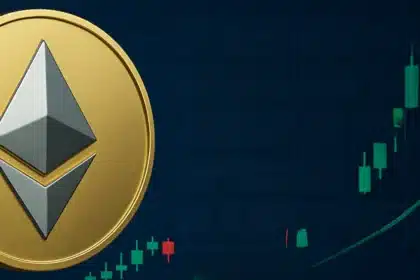Ethereum is a critical cryptocurrency in the world. It is not simply a way of sending money, but it is also a way of creating applications that do not have a central company or owner. Such programs are known as decentralized apps or dApps.
This is what Ethereum was able to do with smart contracts, programs that operate on the blockchain. Nevertheless, Ethereum was not without its large issues. When many people used it at the same time, it was slow. It was costly to utilize due to the gas costs.
And it consumed a lot of energy, just like Bitcoin. To solve these issues, Ethereum underwent a significant upgrade. Ethereum 2.0 is the name of this new version.
Ethereum 2.0 is a significant change. It has a new system that is called Proof of Stake, which is faster, safer, and environmentally friendly. It also introduces new technologies such as sharding and Beacon Chain to accommodate more users and lower costs.
However, why should investors be concerned about this change? Ethereum 2.0 is not merely an update on the technical side. It impacts the cost, the safety, the long term worth, and how individuals can get revenue out of their ETH. In this post, we will detail what Ethereum 2.0 is, how it operates, and what it implies for you as an investor.
What Is Ethereum 2.0?
The Ethereum network is a large update known as Ethereum 2.0, Eth2, or The Merge. It alters the mechanism of Ethereum in such a way that it is able to serve more people, consume fewer resources, and be quicker and more secure. The greatest change is that Ethereum has shifted the system known as Proof of Work (PoW) into Proof of Stake (PoS).
In the Proof of Work, computers race each other to calculate math problems. This is referred to as mining. It requires a lot of electricity, and it can be harmful to our environment. That was how Ethereum was operating. However, with the upgrade, Ethereum runs on Proof of Stake. In PoS, individuals do not have to mine. They, instead, stash away part of their ETH as a sort of stake, and in exchange, they receive an opportunity to participate in the network management and receive rewards.
Ethereum 2.0 also added a new system called the Beacon Chain. This chain helps manage the Proof of Stake system. It keeps track of who the validators are (validators are people who help confirm transactions), and it makes sure everything runs smoothly.
Another major feature is sharding. This means breaking the network into smaller pieces called “shards.” Each shard can handle its own part of the data and transactions. This makes the whole system faster and more scalable, meaning it can support more people at the same time.
With all these improvements, Ethereum 2.0 solves many of the old problems that made Ethereum hard or expensive to use. It is now more energy-efficient, less costly, and ready for future growth.
Why Was Ethereum Upgraded?
The first Ethereum network was a fantastic concept, but it had practical issues as it gained popularity. The network would slow down when a lot of people attempt to use Ethereum simultaneously. Transmission of a simple transaction may be time-consuming. Worse still, it would increase tremendously the amount of money that people would be expected to pay in fees called gas fees.
Gas fees were at their worst, and normal users found it cumbersome to use decentralized apps or even trade tokens. Developers had a difficult time as well. Their applications may end up being costly to support on a daily basis. This restricted the ability of Ethereum to expand.
The other issue was energy consumption. Similar to Bitcoin, Ethereum had its old Proof of Work system that consumed much electricity. Lots of individuals began to criticize Ethereum because of its environmental footprint. Investors and companies concerned with sustainability made this one of their key concerns as the world increasingly came to realize the problems of climate change and energy.
Another area that Ethereum needs to make more efficient is its scalability, or the capability of supporting more users and transactions. Large-scale applications such as DeFi (decentralized finance), NFTs, and web3 games need networks that are quick and cheap. Ethereum had to be upgraded to keep up with newer blockchains such as Solana, Avalanche, and Polkadot, which are much faster and have lower fees.
So, Ethereum developers began working on Ethereum 2.0. The goal was simple: make Ethereum faster, cheaper, safer, and greener, without losing its open and decentralized nature. By upgrading to Ethereum 2.0, Ethereum now has a strong foundation to support millions of users and applications without breaking down. It is better prepared for the future of global blockchain adoption, and that’s exactly why it matters for investors, too.
How Does Ethereum 2.0 Work?
Ethereum 2.0 transforms the Ethereum ecosystem in its most fundamental way. The most significant alteration is the shift of the Proof of Work (PoW) to Proof of Stake (PoS). In Proof of Work, there are computer contests to solve puzzles. This consumes a lot of energy.
The network operations in Proof of Stake involve locking up, or staking, of the ETH coins by people who hold the coins. These individuals are termed as validators.
To verify transactions and the addition of new blocks to a blockchain, validators are chosen at random. The larger the amount of ETH staked by an individual, the greater the probability that he/she may become a validator. Validators, in their turn, are rewarded with small quantities of ETH. This system is far more energy-efficient and does not involve the use of super-powerful computers to solve hard puzzles.
The Beacon Chain is another constituent of Ethereum 2.0. Imagine that the Beacon Chain is a manager. It has a register of all the validators, verifies those that are performing well and organizes the system. It is a chain independent of the standard Ethereum chain, though the work is done in collaboration with it to ensure everything is smoother and safer.
Ethereum 2.0 is also characterized by sharding. Just think of Ethereum being a large highway containing a single lane. It becomes a highway that has numerous lanes with the use of sharding. Every lane, or shard, is capable of performing its own data processing. This will imply that Ethereum is capable of performing a lot of transactions simultaneously. It is also less cluttered and low-priced.
Overall, Ethereum 2.0 uses Proof of Stake, Beacon chain, and sharding to accelerate the network, make it environmentally friendly and scalable. It is good news to the investors because it means better performance, better security, and the risk of network slowing up during peak times will be minimized.
What Ethereum 2.0 Means for Investors
Ethereum 2.0 brings many changes, but what does it mean for people who invest in ETH?
1. Staking Rewards
Investors are now able to make a profit by staking their ETH with Ethereum 2.0. By staking, you secure a portion of the ETH in order to keep the network secure. As your payback, you will be rewarded with new ETH just like earning interest. The annual returns vary between 4 and 10 percent, depending on the amount staked on the network.
You can stake directly; in that case, you need to have at least 32 ETH, or you can use a staking pool or an exchange, in which case you do not need to have so much. It is one of the major reasons that many investors are buying and holding ETH long-term ,since it is a new form of passive income.
2. Lower Supply, Higher Demand
Ethereum has since implemented a system known as EIP-1559, under which a part of ETH spent in any transaction is destroyed, or burned, permanently. This decreases the overall supply with time. When this is coupled with staking (this keeps ETH locked), the ETH becomes limited in exchange.
Meanwhile, there are more users likely to wish to purchase Ethereum once it is faster and cheaper to use – either as an investment good or an app-building component, or a money-sending tool. Increased demand and reduced supply may increase the price of ETH in the future.
3. Better Long-Term Stability
Prior to Ethereum 2.0, there was a concern among many investors about excessive fees, sluggish transactions, and the consumption of energy. Ethereum appears to be much more stable now that those issues have been addressed to a large degree. This would help bring in more conservative investors (financial firms, pension funds, and even governments).
Ethereum 2.0 makes ETH a more reliable and serious investment. It is also no longer a tech experiment. It is emerging as a long-term asset that will fit into the future of global finance.
4. Greater Use of Ethereum Means Greater Value
Ethereum is not a coin, it is a platform. It is used by people to develop DeFi applications, produce NFTs, and run smart contracts. The more users, the more valuable the Ethereum network. And as the network increases, the ETH token tends to increase as well. This growth is advantageous to investors since the coin becomes more applicable in practical aspects.
How to Invest in Ethereum 2.0
If you’re new to crypto or want to get involved with Ethereum 2.0, there are a few ways to invest. This upgrade has opened new paths for both regular investors and experienced traders.
1. Buying and Holding ETH
The easiest method of investment is to purchase ETH and keep it. You can buy ETH in one of the major cryptocurrency exchanges like Coinbase, Binance, or Kraken. When you have ETH, it can be saved in a crypto wallet. Wallets are of two types: online (hot) and offline (cold). To be safe in the long term, cold wallets such as Ledger or Trezor are preferred by many people.
Holding ETH is similar to holding company shares. If the Ethereum network grows, the value of ETH may go up over time. It’s a basic strategy used by many long-term investors.
2. Staking ETH
With Ethereum 2.0, you can also earn rewards by staking your ETH. This means you lock up your ETH to help run the network and, in return, receive more ETH.
There are three ways to stake:
- Solo staking: You need 32 ETH and must run your own validator software. This is best for experienced users.
- Staking pools: You combine your ETH with others to meet the 32 ETH requirement. Platforms like Rocket Pool or Lido offer this.
- Exchange staking: Big exchanges like Coinbase and Binance offer staking services. You deposit your ETH, and they stake it for you.
Staking allows you to earn passive income while supporting the network.
3. Investing Through ETFs or Funds
In other parts of the world, Ethereum can now be indirectly accessed through crypto investment funds or exchange-traded products. They are typically used by individuals who like to use traditional finance instruments. You do not have ETH, but your money is tagging along with ETH prices.
This is convenient in case you are not at ease with wallets, personal keys, or crypto applications.
4. Diversify Your Investment
While Ethereum is a strong project, smart investors diversify their portfolios. You can hold ETH along with Bitcoin and other promising altcoins. This reduces risk and can help balance your returns over time.
Risks to Consider
While Ethereum 2.0 offers many new benefits, there are also risks. Understanding these risks is important before making any investment.
1. Price Volatility
Ethereum is as volatile as all other cryptocurrencies. The prices may increase or decrease suddenly within a short time. Although Ethereum 2.0 will turn the network into a better one, it does not shield the investors against falling prices. When the whole crypto market declines, there is a possibility that ETH will decline as well.
When you are investing on ETH, it is paramount to only use money that you can afford to lose.
2. Regulatory Uncertainty
Ethereum is gaining in popularity. This implies that it can receive increased interest on the part of governments. Other nations begin to develop new regulations to crypto. Other people can prohibit or restrict its use. When one of the biggest nations enacts some severe legislation, it may damage the price of ETH or hamper its usage.
Pay attention to the news and familiarize yourself with the local legislation as an investor before purchasing ETH.
3. Staking Risks
Staking sounds simple, but it carries some risks too:
- If you stake directly as a validator and your system goes offline, you might lose some ETH as a penalty.
- If you use an exchange to stake, your ETH is in their control, not yours.
- Some staking pools charge fees or have lock-up periods where you can’t withdraw right away.
- Always read the rules and safety measures of any staking method before using it.
4. Technical and Network Issues
Ethereum 2.0 continues to expand. There are cases when bugs or network issues may occur. Although the Ethereum team tries its best to maintain the system stable, there is no perfect technology. When an error occurs within the system, it may complicate things or it may compromise the confidence of the investors.
The Role of Institutions and Long-Term Holders
One of the most exciting changes with Ethereum 2.0 is the way big institutions and long-term investors are beginning to view Ethereum.
1. Institutions Entering the Market
Prior to the introduction of Ethereum 2.0, most large financial organizations avoided ETH. They were concerned about energy consumption, excessive cost, and technical risks. However, now Ethereum 2.0 has addressed most of these problems. Due to this, banks, investment firms, and even governments are considering ETH with a bit more seriousness.
As an example, certain asset managers and pension funds are investing in ETH. Such investors tend to have a long term perspective. They will be able to introduce more stability and make ETH a more reputable investment.
2. From Speculation to Strategy
Before, there were a lot of people who purchased Ethereum to sell it immediately. They were ready to make quick profits. However, now with the network being more stable and overall better, people are taking a longer-term look at Ethereum as an investment, similar to gold or stocks.
These investors are known as HODLers and they believe in the future of Ethereum. They do not sell when the prices plunge. Instead, they maintain in the good and bad times, hoping to get more value in the future years.
3. Staking Encourages Holding
The emergence of staking has given a reason to people to hold onto their ETH. Rewards can be earned by them instead of selling. This decreases the selling pressure and helps Ethereum to be more stable.
The more ETH is staked, the less it should behave like a speculative asset and more like a productive one, one that simply pays you to hold it.
Is Ethereum Still a Good Investment in 2025?
Ethereum has changed a lot since it launched in 2015. Now in 2025, with Ethereum 2.0 fully adopted, many people wonder: is ETH still a good investment?
Let’s look at it from a few different angles.
1. Improved Technology, Better Performance
With Ethereum 2.0, the network is now faster, more scalable, and cheaper to use. This solves major issues that limited its growth. Because of this, developers are building more, users are joining faster, and businesses feel safer using Ethereum.
This strong technical base makes ETH more useful, which usually leads to stronger value over time.
2. Staking Adds Earning Potential
ETH is currently a coin that can bring passive income in the form of staking. This makes investing another dimension. Although the price may remain unchanged over the short term, the stakers are getting new ETH. This has been a significant advantage to long-term investors which was not accessible previously due to Ethereum 2.0.
3. More Demand, Less Supply
The supply of Ethereum is getting scarcer. Fewer new ETH coins can be created due to locking up coins with staking and burning fee with EIP-1559. Meanwhile, there are increasing individuals and corporations who desire to utilize ETH in applications or invest in long-term approaches.
Prices tend to increase when the supply decreases and the demand increases. This is why people think that ETH has a chance to develop further.
4. Risks Still Exist
Of course, no investment is 100% safe. Ethereum still faces price swings, competition from other blockchains, and possible new government rules. Investors must be aware of these risks and manage their investments carefully.
5. Long-Term Outlook Remains Strong
If Ethereum continues to grow and becomes a base layer for global finance, ETH could become one of the most important digital assets in the world. Many experts see Ethereum as a long-term store of value and utility, not just a speculative token.
So yes, Ethereum is still a good investment in 2025 for people who believe in its technology and are willing to hold through ups and downs.
Final Thoughts: What Should Investors Do Now?
Ethereum 2.0 is not a simple upgrade of software. It is the full redesign of one of the most significant blockchain networks across the globe. To investors, the change introduces new tools, new income opportunities, and a better reason to believe in the future of Ethereum.
Ethereum is turning out to be a fundamental layer of decentralized finance, computerized art, gaming, and more. ETH can become a decent long term investment in case you believe in this vision. It is natural in crypto to expect short-term price decreases, and Ethereum 2.0 has established the solid grounds of growth in the future.
FAQs
What is Ethereum 2.0 in simple words?
Ethereum 2.0 is a major upgrade to the Ethereum network. It makes Ethereum faster, cheaper to use, and more energy-efficient by using a system called Proof of Stake.
Can I still mine ETH after Ethereum 2.0?
No. Ethereum 2.0 removed mining. Now, people help run the network by staking ETH instead of using powerful computers.
Is staking ETH safe for beginners?
Yes, but it’s important to choose a trusted platform and understand the rules. Using a major exchange or staking pool is a safer option for beginners.
How much ETH do I need to stake?
To stake directly as a validator, you need 32 ETH. But you can also join staking pools or use exchanges with as little as 0.1 ETH.
Will Ethereum 2.0 make ETH more valuable?
Many investors believe it will. Ethereum 2.0 lowers supply, adds staking rewards, and improves network performance, which can increase demand and value over time.
Glossary of Terms
Ethereum:
A blockchain platform used to build decentralized apps and smart contracts.
Ethereum 2.0:
The upgraded version of Ethereum with new features like Proof of Stake, Beacon Chain, and sharding.
Proof of Stake (PoS):
A system where people lock up their coins to help secure the network, instead of mining.
Beacon Chain:
A new chain in Ethereum 2.0 that manages validators and coordinates the PoS system.
Sharding:
Breaking the blockchain into smaller parts to handle more data and transactions at the same time.
Validator:
Someone who helps confirm transactions on the network by staking ETH.
Staking:
Locking ETH to earn rewards and support the network.
Gas Fees:
Fees paid to use the Ethereum network. They are used to pay validators.
EIP-1559:
A rule that burns part of the gas fees to reduce the supply of ETH over time.
DeFi (Decentralized Finance):
Financial apps built on blockchains that work without banks or central companies.
NFT (Non-Fungible Token):
A unique digital item (like art or music) that’s stored on the blockchain.


